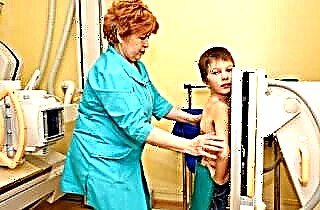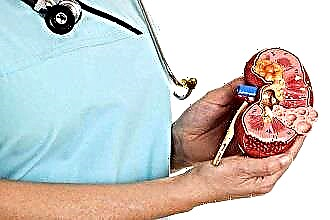Rhinopharyngitis is a disease that affects two organs at once: the nasal cavity and the pharynx. It occurs in both adults and children. It has its own varieties and symptoms by which it can be identified. The disease can occur against the background of various violations, depending on this, it is divided into certain groups. If a disorder manifests itself, immediate complex treatment is required, since complications may develop and a transition to a chronic form that is difficult to treat is possible.
Features of the disease
 Rhinopharyngitis or nasopharyngitis symptoms are quite pronounced. The peculiarity of the disease is that it has manifestations of both rhinitis and pharyngitis. The first inflammatory disorder develops directly in the pharynx, and the second in the nasal mucosa. Let's consider them in more detail.
Rhinopharyngitis or nasopharyngitis symptoms are quite pronounced. The peculiarity of the disease is that it has manifestations of both rhinitis and pharyngitis. The first inflammatory disorder develops directly in the pharynx, and the second in the nasal mucosa. Let's consider them in more detail.
Rhinitis is a commonplace inflammation of the nasal mucosa that occurs with colds and respiratory infections. There is posterior rhinitis, when mucus flows down the back of the nasopharynx into the larynx and complicates the disorder by coughing. But most often the disease has pronounced features and takes place in 3 stages:
- The patient feels unpleasant tickling in the nose, tickling, which leads to sneezing. The body temperature rises, but insignificantly, muscle aches occur, and a slight coughing begins. This stage only lasts a few hours.
- There is a liquid and incessant discharge of mucus from the nose, it is constantly stuffy, the patient loses his sense of smell, feels a headache, the body temperature rises.
- The discharge becomes thicker, they acquire a greenish or yellowish tint due to the high concentration of bacteria waste products. At the same time, blowing your nose is very difficult, the nose is constantly stuffed up.
Pharyngitis is an inflammation of the pharyngeal mucosa. The disease is manifested by sore throat, cough, pain when swallowing. Most often it is the result of untreated or improperly cured colds.
However, bacterial infections can also cause this pathology; if they are present, a white or yellowish coating is observed on the mucous membrane.
Causes of pathology
 It is necessary to understand, while studying rhinopharyngitis, that this is a combined disease. The primary focus of inflammation can be both the pharynx and the nose. Most often, pathology develops due to incorrectly or untimely cured pathologies of the nose. Without proper therapy, the infection goes down rather quickly, affecting the pharynx. However, it also happens the other way around, when the disease spreads from the bottom up. Regardless of the source, nasopharyngitis occurs for the following reasons:
It is necessary to understand, while studying rhinopharyngitis, that this is a combined disease. The primary focus of inflammation can be both the pharynx and the nose. Most often, pathology develops due to incorrectly or untimely cured pathologies of the nose. Without proper therapy, the infection goes down rather quickly, affecting the pharynx. However, it also happens the other way around, when the disease spreads from the bottom up. Regardless of the source, nasopharyngitis occurs for the following reasons:
- bacterial infections (streptococcal, staphylococcal, meningococcal nasopharyngitis, etc.);
- viral infections;
- allergy.
In order for rhinopharyngitis to develop, the reasons must not only be in the presence of infections. Often, the body suppresses pathogenic microflora, does not allow it to develop, and even more so to spread to nearby organs. However, when certain conditions are created, the transformation of one inflammation into another is possible.
Predisposing factors include:
- hypothermia;
- drop in general and local immunity;
- vitamin deficiency and hypovitaminosis;
- chronic inflammation of the upper respiratory tract.
Types of violation
There are several types of rhinopharyngitis. Depending on them, the most effective treatment regimen is selected. At first, the disease manifests itself in an acute form, it is characterized by pronounced symptoms. Diagnostics is carried out without difficulty, after which immediate treatment is necessary, since complications may spread to the ear canals. If you do not seek help from a qualified specialist in time, the disorder may turn into a chronic form, which is divided into the following types:
 Catarrhal rhinopharyngitis. Most often it is manifested by a sore throat, cough, especially at night. Mucous discharge flows down the back wall of the nasopharynx, which causes spasm, especially if the patient is in a supine position. The disorder occurs in people who work in unfavorable conditions with high dustiness, and it is also typical for heavy smokers.
Catarrhal rhinopharyngitis. Most often it is manifested by a sore throat, cough, especially at night. Mucous discharge flows down the back wall of the nasopharynx, which causes spasm, especially if the patient is in a supine position. The disorder occurs in people who work in unfavorable conditions with high dustiness, and it is also typical for heavy smokers.- Hypertrophic nasopharyngitis. This type of rhinopharyngitis has its own striking distinctive feature, with its development, the lymphoid tissue becomes denser. The palatine tonsils swell and become loose, possibly regional enlargement of the lymph nodes.
- Atrophic nasopharyngitis. It is characterized by degenerative processes in the mucous membrane. In the area of cell death, crusts form. On examination, symptoms such as an unnatural shine of the surface of the nasopharynx, its pale color and emaciation are observed. At the same time, the patient feels a constant sore throat, his voice may change, he becomes hoarse.
Allergic rhinopharyngitis is distinguished separately. It is characterized by seasonality and periodicity. The disease manifests itself only upon contact with allergens, therefore the first step to treatment will be the elimination of these agents.
Symptoms can be different, there is anterior and posterior rhinitis, redness and tearing of the eyes, sneezing, sore throat, cough, skin rashes may appear.
Symptoms of the disease
In the acute course of rhinopharyngitis, the symptoms are more pronounced. However, they are very similar to angina, because often patients are treated with the wrong disease. If it is allergic or one of the chronic forms, then the picture becomes blurred, signs may indicate posterior rhinitis, pharyngitis and a number of other similar disorders. It is important to diagnose the disease correctly and on time in order to start treating it.
For any type of ailment, the following manifestations are characteristic:
 sore throat, foreign body sensation, discomfort;
sore throat, foreign body sensation, discomfort;- pain when swallowing;
- profuse mucous discharge from the nose;
- swelling and inflammation of the mucous membrane of the pharynx and nose;
- nasal congestion;
- distortion of the voice, its hoarseness and nasalness;
- hearing loss, ear pain and clicking sensation in them;
- headache in the back of the head;
- cough;
- inflammation of the cervical and occipital lymph nodes;
- slight malaise;
- pronounced venous network in the chest and neck;
- an increase in body temperature (most often observed in children).
Diagnosis of violation
Nasopharyngitis is similar to diseases such as posterior rhinitis, tonsillitis, etc. However, it is diagnosed very easily, especially in the acute form. Identification of the disease is possible during examination in the ENT office. The doctor relies on a visual examination of the pharynx and nasal cavity.
If the mucous membrane is exhausted or compacted, there is swelling and inflammation on it, the blood vessels are dilated, and there is characteristic discharge on the back of the pharynx, then there is no doubt that this is rhinopharyngitis.
For an additional assessment of the situation, the patient must pass a blood test for leukocytes. Also, if a coccal infection is suspected, bacterial culture is taken. With its help, the microflora is studied, conditionally pathogenic and pathogenic microorganisms are isolated, their types and quantities are recognized. In laboratory studies, a test is made for the resistance of bacteria to certain drugs, especially in the case of coccal ones.
Treatment features
There are traditional and traditional medicine methods that help get rid of the disease. The doctor prescribes therapy based on the type and type of nasopharyngitis, its severity and the characteristics of the patient's body. It is also important to find the causative agent that caused this condition and eliminate it.To do this, use the following drugs:
 antibiotics - kill germs;
antibiotics - kill germs;- antiseptics - disinfect mucous membranes and prevent infection of healthy tissues;
- analgesics - relieve pain syndrome;
- anti-inflammatory drugs - relieve inflammation and swelling from the mucous membrane;
- antihistamines - are prescribed for the allergic nature of nasopharyngitis.
Inhalation and rinsing can be used as aids. Solutions are prepared based on medicinal plants. Chamomile flowers, calendula, coltsfoot, sage, mint, and other herbs give a good effect.
However, it is worth remembering that natural decoctions and infusions can cause allergies. Also, they cannot completely replace drug treatment.
Let's summarize
Rhinopharyngitis has pronounced symptoms, it may resemble posterior rhinitis or sore throat, but when examined by an otolaryngologist, there are no problems with diagnosis. In adults, the disorder goes away without complications, most often it does not even cause an increase in body temperature. However, treatment must be carried out as quickly as possible, since the disease quickly becomes chronic.
If you have at least one of the symptoms of the disease, you should contact a therapist or otolaryngologist. Treatment will not take long if you go through the checkup on time.
It is very important to start effective therapy in case of damage by coccal bacteria, as they spread rather quickly to other organs. Monitor your health and do not ignore the signs of illness.

 Catarrhal rhinopharyngitis. Most often it is manifested by a sore throat, cough, especially at night. Mucous discharge flows down the back wall of the nasopharynx, which causes spasm, especially if the patient is in a supine position. The disorder occurs in people who work in unfavorable conditions with high dustiness, and it is also typical for heavy smokers.
Catarrhal rhinopharyngitis. Most often it is manifested by a sore throat, cough, especially at night. Mucous discharge flows down the back wall of the nasopharynx, which causes spasm, especially if the patient is in a supine position. The disorder occurs in people who work in unfavorable conditions with high dustiness, and it is also typical for heavy smokers. sore throat, foreign body sensation, discomfort;
sore throat, foreign body sensation, discomfort; antibiotics - kill germs;
antibiotics - kill germs;

